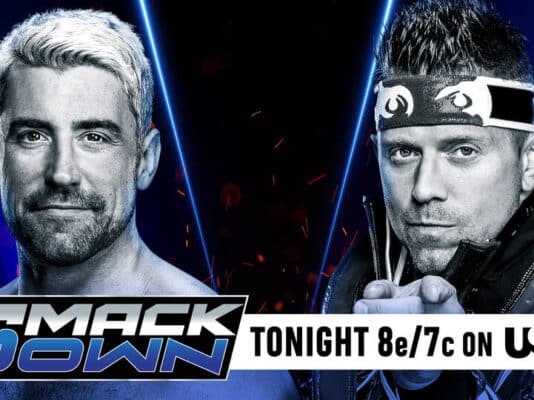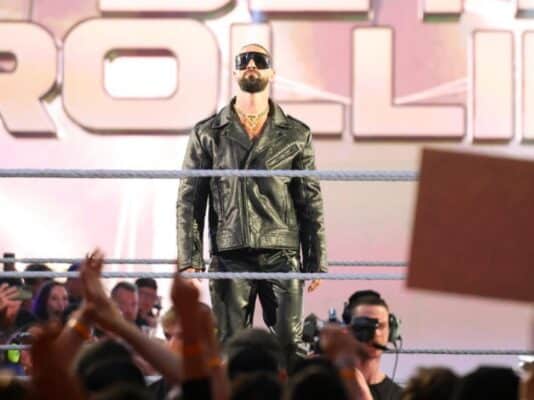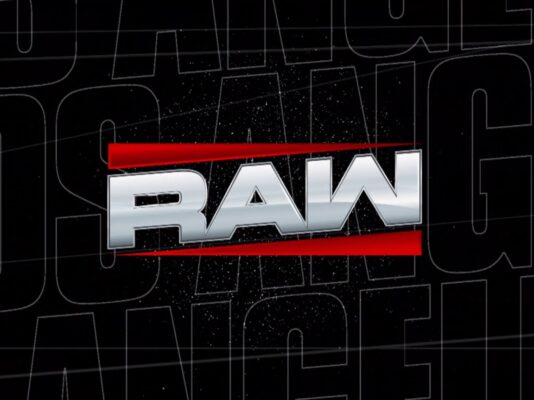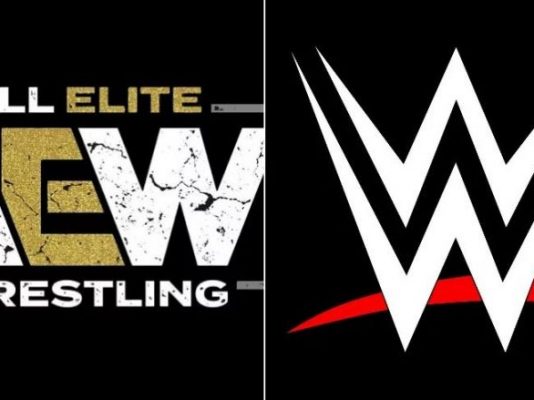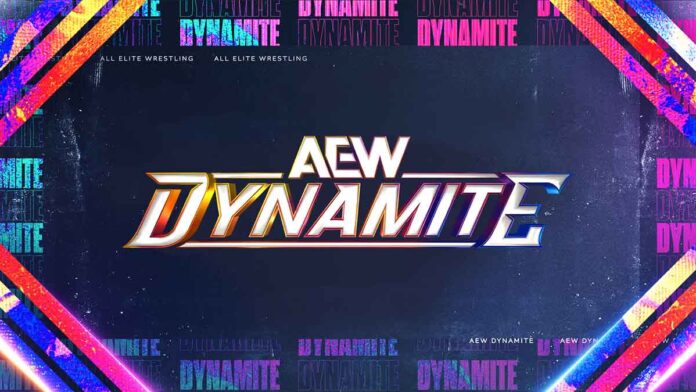
The numbers don’t lie
For all of the criticism, some of it valid about the presentation of All Elite Wrestling, the numbers tell the story, both positively and negatively for the narrative around the organization. By nature, professional wrestling can be subjective, an old timer from the golden era probably thinks the vast majority of the Attitude era was trashy drek that appealed to the lowest common denominator, and they wouldn’t necessarily be wrong. At the same time, the late-90s created some of the biggest superstars in the history of the industry and the sport was a part of pop culture. With more than 10 million viewers for pro wrestling on any given week between the two prime time shows of Raw and Nitro on Monday, it’s tough to argue that Attitude era was a detriment to the industry, even if certain aspects definitely were in hindsight.
All Elite Wrestling has been categorized as everything from a project that shifted the business to a vanity project that puts a niche style on national television. Again, both of these notions can be true to some degree. The existence of All Elite gave the sport, for both talent and fans, options after the industry became extremely stagnant for the several years prior. At the same time, it’s clear that Tony Khan’s only qualification to book a national professional wrestling company is that he’s from a billionaire family that can fund it as long as they want to put money towards the project, and Tony undoubtedly books the matches he personally wants to watch, not what will draw money on a national level. If he happens to book something that draws well, it’s a mere coincidence. Keep in mind, Tony doesn’t have to make money from AEW to achieve financial security so booking to draw money isn’t the top priority of the organization.
It’s well-known that Tony grew up a diehard fan reading The Wrestling Observer newsletter, which was even more of a niche publication in the days of its printed pages sent from Dave Meltzer’s PO box than it is now. Make no mistake about it, the vast majority of the inside scoop that circulates online today is still from Meltzer in some form or fashion, but there are simply more outlets that distribute the rumors around the industry today than in the past.
As a result, Meltzer has to keep a base that will subscribe to his newsletter, which isn’t a knock at all, just to point out that he finds a way to continue to make a living from the sport more than 40 years after he started. As much as Meltzer is undoubtedly bias toward AEW, and has a level of invested interest in its success, as its existence is one of the pillars of his newsletter, the eccentric historian is absolutely one of the best resources of the history of the sport, he just seems to miss the mark often concerning the modern era, at least from my perspective. The Wrestling Observer has often taken a rather skewed perspective to paint All Elite in the best light possible, even when there isn’t good news around the company. Somehow, with a nearly 30% dip in television viewership as compared to two years ago, Meltzer will still try to ignore the fact that less people are watching AEW programming now than any other point in its five-year history. But, pushing that narrative serves his base of contrarian fans that will subscribe to his newsletter, as that demographic will often favor anything that isn’t WWE in a misguided attempt to seem knowledgeable.
So, no, All Elite Wrestling isn’t in a great place at the moment with sluggish ratings and sparse attendance. The Observer influence on Tony was the notion that somehow the dazzling “work rate” style that so many diehard fans follow closely would translate to the general public or the causal fan, if only it was given the chance with a mainstream platform. If nothing else, one of the definite takeaways from the five-year history of AEW is that characters and compelling storytelling are still what connects with a mainstream audience, not just the “work rate” of a performer. Please don’t misunderstand me, I really enjoy the hidden gems of the business so to speak. Brad Armstrong is one of the most underrated of all time, All Japan in the 90s was incredible, and Hayabusa was one of the most spectacular performers of all time. But, there’s a reason that Scotty 2 Hotty dancing, Steve Austin drinking beer, and Goldberg’s smash mouth style were so popular in the United States with the casual fans. The general public wants to be entertained by the pro wrestling characters, they just don’t care as much about the perfectly executed high spots.
The spot fest style just hasn’t and probably won’t translate to a bigger audience. Can aspects of that style be successful on a national level? Sure, but Tony hasn’t found a way to package it for the TBS audience. Proof of that was that last week’s five-year anniversary episode of Dynamite, which featured Ricochet vs. Will Ospreay, a spinoff of their excellent series in New Japan several years ago, and Bryan Danielson vs. Kazuchika Okada for the AEW championship, actually saw a slight decrease in the ratings from the previous week. The anniversary show drew 680,000 viewers, one of the lower numbers that the show garnered this year. The event was actually held at the Peterson Events Center in Pittsburgh, a venue that the great Pat Maclaughlin and I attended four prior episodes of Dynamite since the lanuch of AEW. Even with a two-for-one discount the week before and tickets being lowered to just $15 the week of the event, we declined to go to the TV taping. The nature of All Elite television is just too sporadic to truly know what you’re going to get on any given week, and even with Ricochet/Will Ospreay on the card, I didn’t think they were necessarily going to recapture what they did in New Japan eight years go to the point that it had to be seen live. As much as Okada will be known as an all-time great after he hangs up his boots, it’s clear that he coast on his reputation more often than not in AEW so again, I didn’t think even Danielson/Okada was must see in-person for Dynamite. Given the decrease ratings, the television audience didn’t consider it must see either.
Still, the AEW/WBD deal was made official last week, keeping All Elite Wrestling on the Turner networks for at least the next three years, with a fourth year option for Warner Brothers Discovery. Depending on what you read, there’s some slight variation with the numbers, but it’s suggested to be around $185 per year for AEW to broadcast their shows on TBS and TNT with a pay-per-view option on the Max streaming service. Some of the details that have emerged are that Dynamite and Collision will be in their usual time slots, but Rampage, the clear C-show on the line-up anyway, will be discontinued. As apart of the deal for content on Max, Dynamite and Collision will be streamed live on the platform, which in theory could provide more access to AEW programming. As far as pay-per-view, according to reports, All Elite PPVs will be able to be purchased on Max at a discounted price, but viewers must already be subscribed to the service. It wasn’t confirmed what the price tag will be to watch in on the streaming platform, but it should be noted that it isn’t an exclusive deal. Other services, including traditional pay-per-view providers, will still offer AEW PPVs at the regular price. However, it was mentioned that All Elite Wrestling archives will be hosted on Max, which is another way to increase access to the product. It was interesting to note that Ring Of Honor wasn’t mentioned at all in the announcement so it appears that those archives will still be kept on Honor Club.
Dave Meltzer reported that AEW is pitching another television show “Shock Wave” to networks, including Fox, but all things considered, there’s really no need for a third show, especially because Rampage already proved that a C-show is moot in the grand scheme of things.
AEW apologists will tout this as a major victory for the company, and more money is always a good thing, but there wasn’t really anything surprising about this deal. As mentioned before, pro wrestling is still relatively cheap original programming for networks so even with the dip in ratings, it wasn’t a realistic possibility that WBD wasn’t going to renew the deal. The newsworthy portion of the story was the PPV component and how it could provide more access through a streaming service, not the fact that AEW will remain on the Turner networks. Furthermore, it was revealed through various news outlets, including the Sports Business Journal, that WBD owns a portion of All Elite Wrestling so it’s very doubtful they would opt not to renew something that they quite literally have a vested interest in its success.
Those same apologists will always claim that AEW is now profitable with the news of this deal, and hopefully, they are going to make a profit at some point during the duration of the contract, but it won’t be known for sure until all the losses of the past five years and current expenses are accounted for. Sure, the company might make a profit on the year, but how much does that cover from the overall losses of the past five years? It’s very possible that the company could finish with a profit for the calendar year of 2025, but it’s well-known that the company lost money its first five years with operating costs, and the initial start up costs might also be taken into account before the term profit is truly associated with AEW.
It’s a very unique time within the climate of the media business, as networks try to juggle traditional television distribution with the potential money to be made through a streaming service. The Turner networks will lose the rights to broadcast NBA games after next season, concluding decades of NBA content on the channels. Amazon made a better offer, Warner Brothers Discovery wasn’t in the position to compete with the number, and one of Turner’s more popular commodities will be broadcast elsewhere. If Turner was going to stay within sports broadcasting, especially if they own a portion of AEW, it’s easy to see why they want to showcase as much of the content as possible. The circumstances of the NBA deal and the evolving nature of the streaming market allowed All Elite Wrestling to get an increase in their rights fees despite the decline in the ratings.
So, no this deal doesn’t automatically make All Elite Wrestling “the second most profitable pro wrestling company in history” as that would also largely depend how much Tony Khan is going to spend going forward. Does anybody know the profit margin on the video game? The ratings from last week suggest that the five-star Meltzer style of pro wrestling doesn’t generate major viewership. At the same time, if the project was doomed, and it’s not, Warner Brothers Discovery would’ve cut bait, as the corporation isn’t in a position to lose more money on content deal. That shows that not only does All Elite Wrestling have an audience, but also there’s undoubtedly the potential for the company to expand in the future. I’m not trying to take a middle of the road perspective on this, but rather to point out that it’s not the saving grace of AEW, and it’s not as though the company is in danger either. As far as the numbers, the most important numbers will be the viewership, buy rates, and ticket sales in the future.
The numbers don’t lie, and they might spell disaster for you at Sacrifice.
What do you think? Share your thoughts, opinions, feedback, and anything else that was raised on Twitter @PWMania and Facebook.com/PWMania.
Until next week
-Jim LaMotta
E mail [email protected] | You can follow me on Instagram, Facebook, & Threads @jimlamotta89








